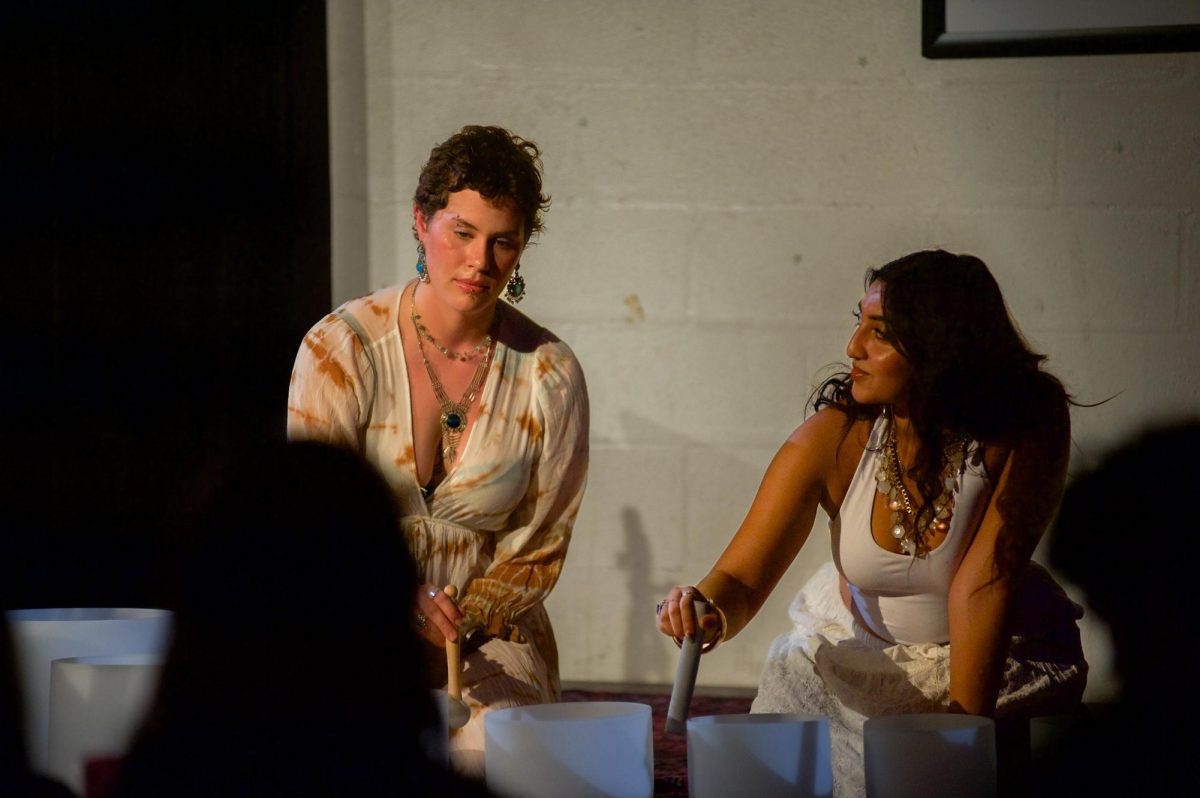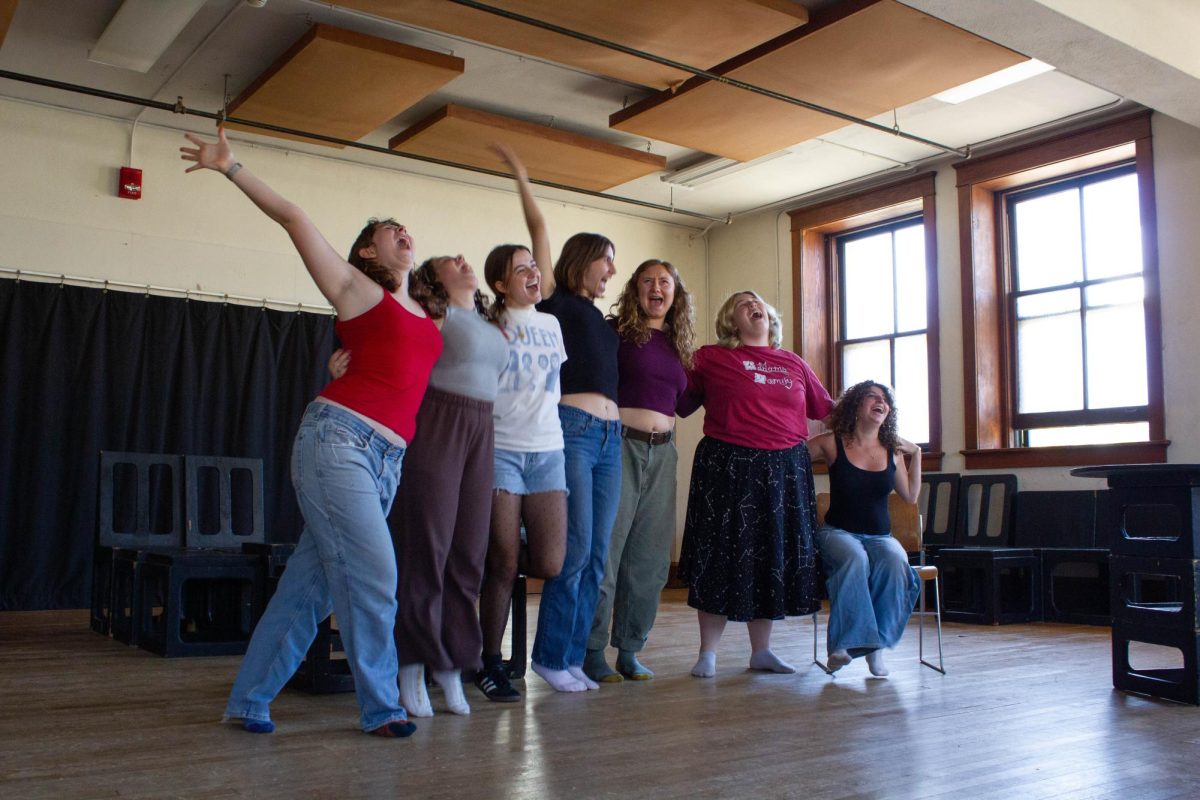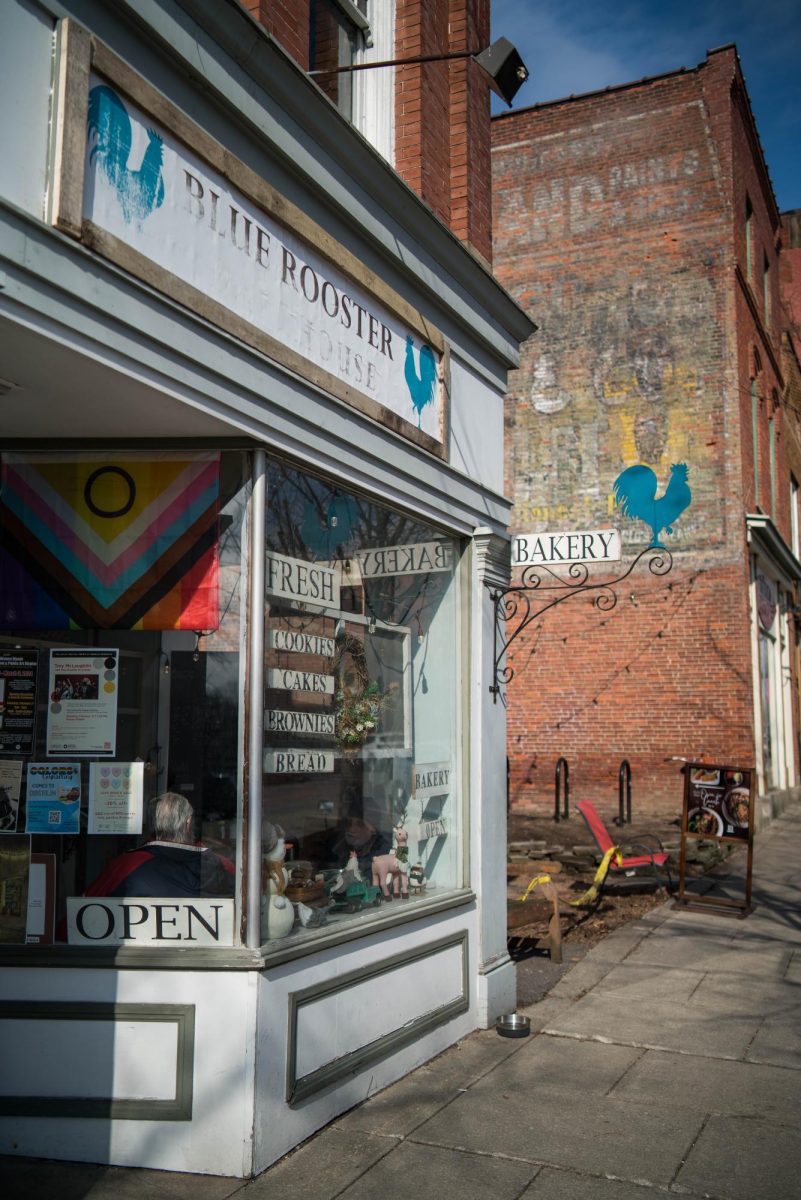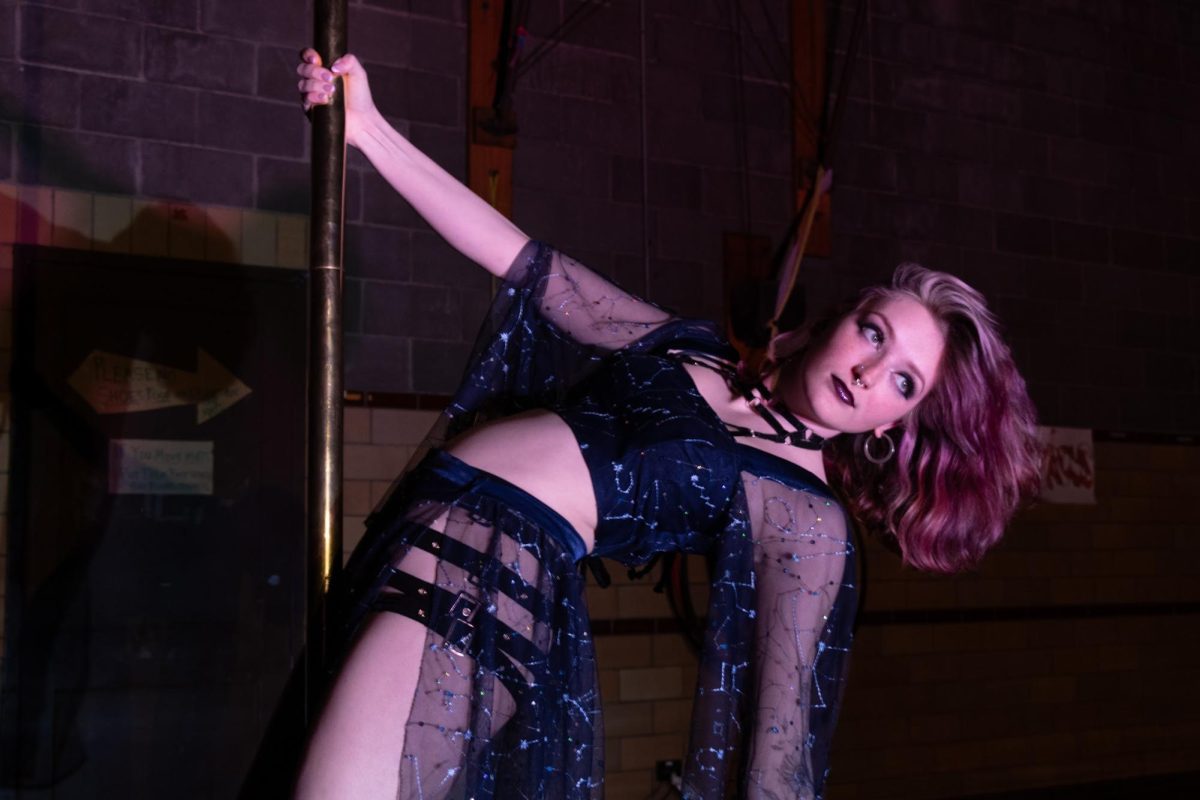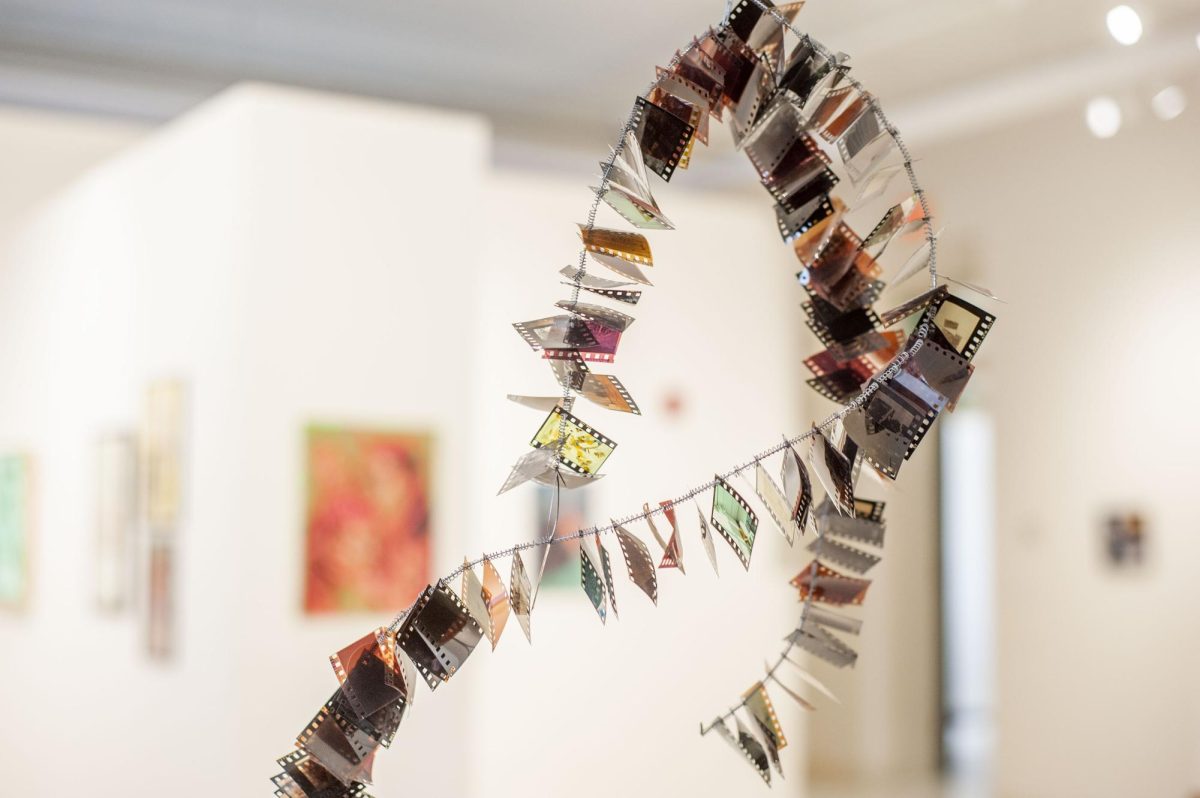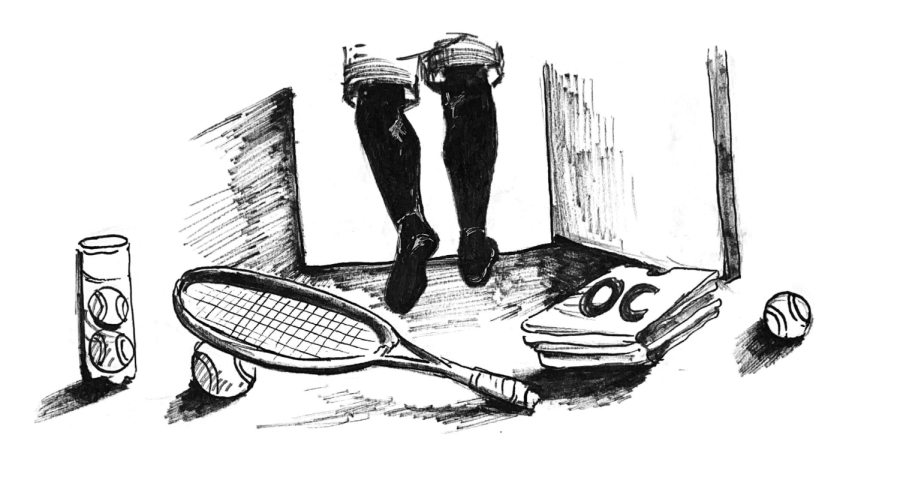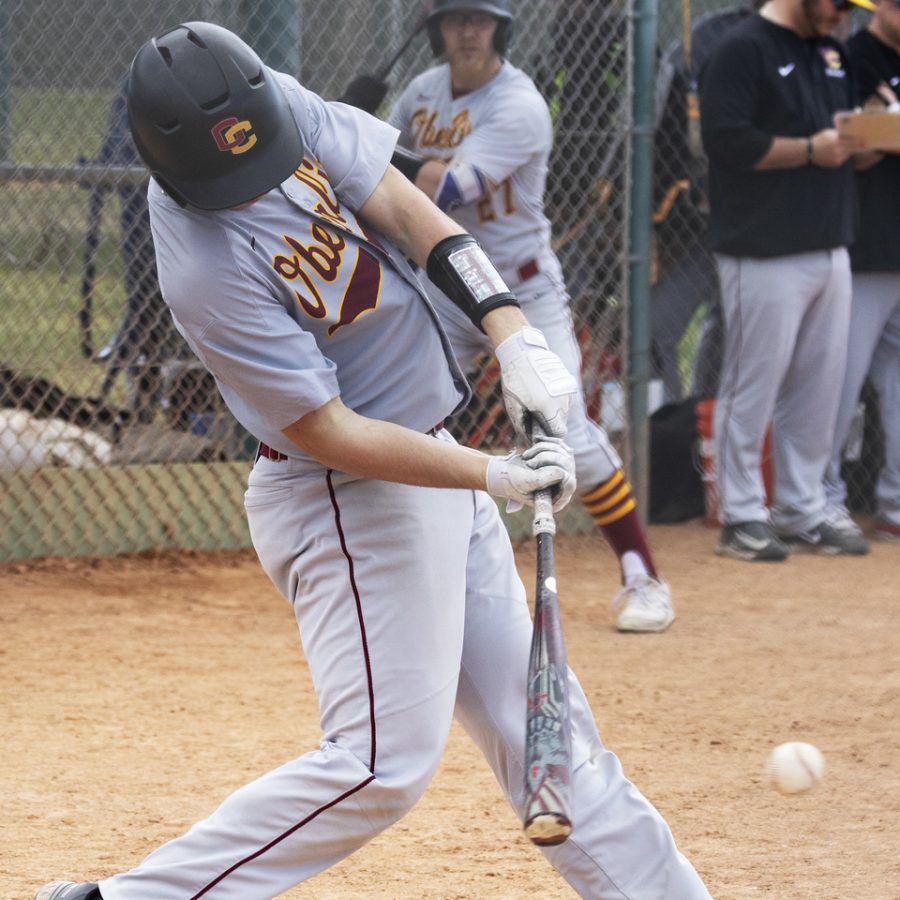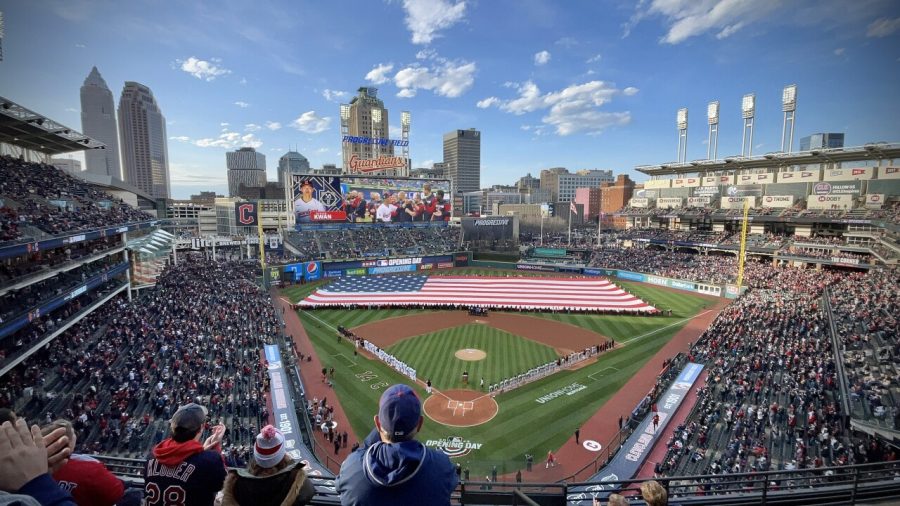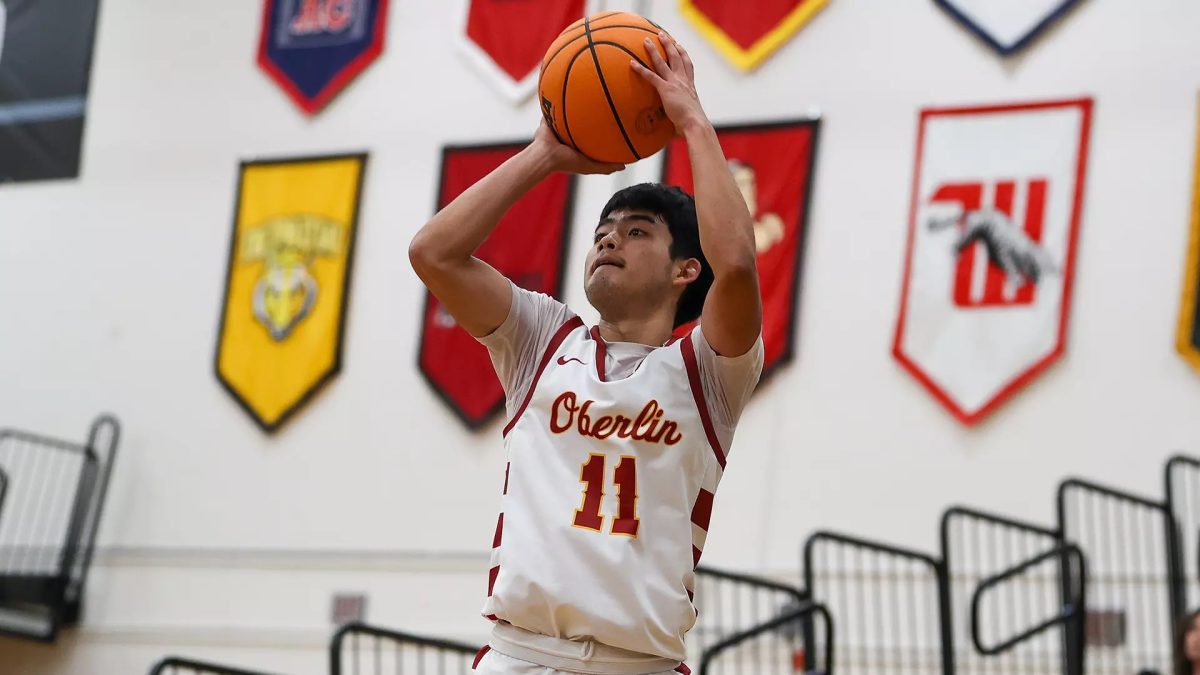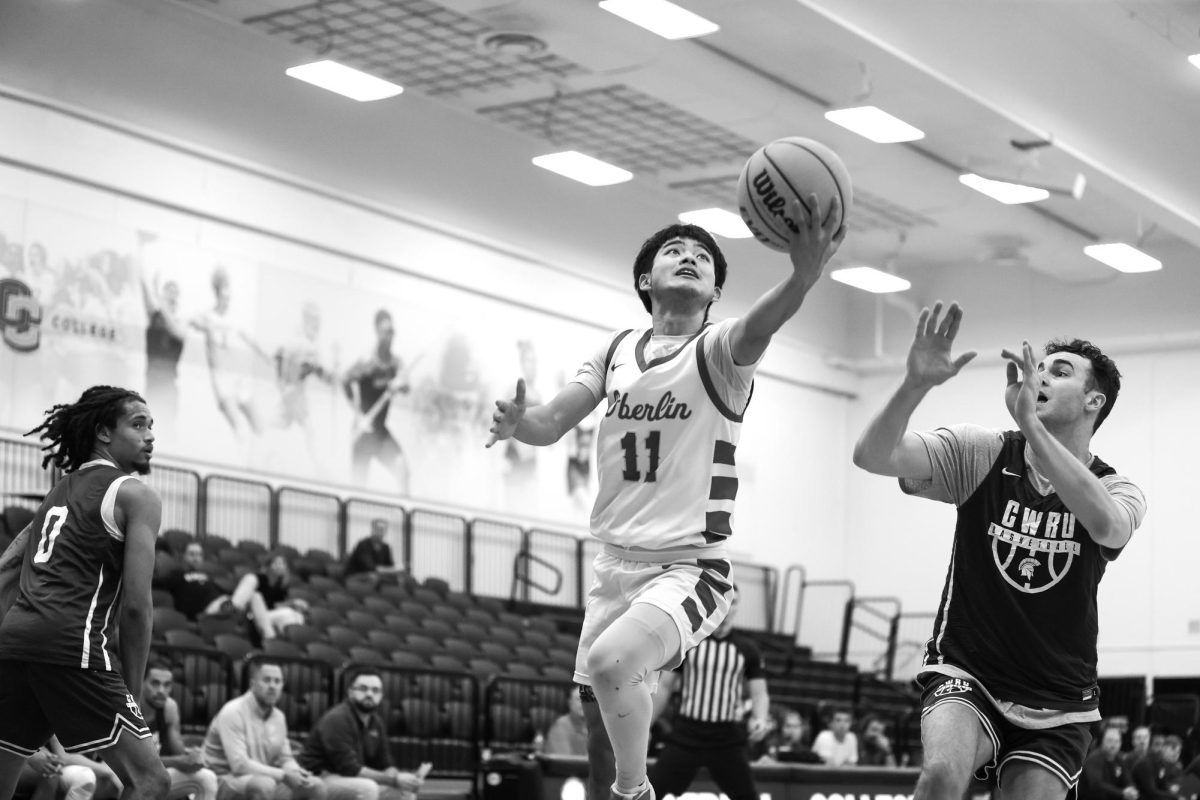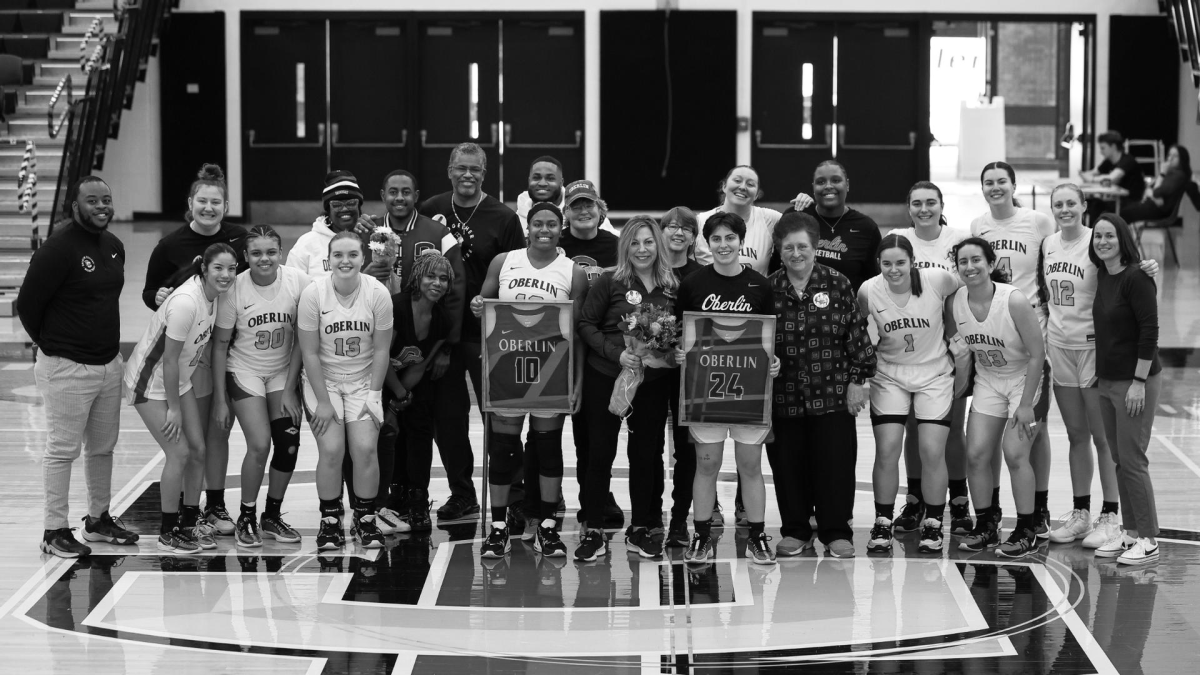“Never far / We are never far / We are never far / We are never / Frequency, frequently.”
Chanting the refrain and beginning of the pre-chorus of Jhené Aiko’s “Frequency,” Courtney-Savali Andrews, OC ’06, assistant professor of African American and African Diasporic Musics, welcomed students to “Soul Frequencies,” a spiritual R&B concert experience. This event was held by the Healers Collective at the Cat in the Cream Nov. 20, in collaboration with the Multicultural Resource Commons and the Office of Religious and Spiritual Life.
With the intention of providing a healing space for students, the organizers of the Healers Collective set up various stations around the room: canvases and paint, affirmation rocks, notes to performers, coloring pages, and henna. As audience members began to fill the couches, chairs, and floor spaces, College second-year Molly Ferguson created ringing frequencies with crystal singing bowls, the rich sound hugging each corner of the room and setting the tone for a tranquil night.
“Leading heart-centered events and bringing people grounding and a space to express is important to me,” Ferguson said. “[This environment means] connecting through music and vulnerability and being able to create spaces on campus that I feel are necessary.”
The Healers Collective was founded by College second-year Ayesha Ghosh in spring 2024 as a way to share spirituality and holistic practices of healing with the Oberlin community. Ghosh’s vision to bring a live R&B concert to Oberlin started two years ago. Since then, she has reached out to artists in the College and Conservatory who share a passion for connection through music.
“I’ve been on my personal spiritual journey for the last five years,” Ghosh said. “Throughout that, I’ve found so many different healing practices like sound healing, meditation, therapy, affirmations, journaling — all these different ways to take care of and get in touch with your spirit. I wanted to make [this event] a portal of love for people to enter. I started formulating the set list with music that I love and music that I felt like has really beautiful messages woven into it. I called on my friends who are amazing artists, and they’ve infused their creative elements into it, and it’s become this beautiful immersive setlist.”
The night’s performances followed a narrative divided into three parts: love, heartbreak, and healing. Members of the Healers Collective alternated setting foot on and off the stage during different songs, creating varied combinations of talent and emotional transmission.
“[Love, heartbreak, and healing] are experiences and emotions that are shared by so many people,” Ghosh said. “Being in love, feelings of pain and heartbreak and loss, and the journey of loving yourself, healing, and starting again and being open to love again — I think that’s a beautiful emotional cycle that so many people go through. That’s what we’re trying to take people through.”
After each set of songs that followed one of the night’s three themes, College third-year Mia Knox performed a poem she had written for the event, accompanied by College second-year Jeremiah Ince’s soothing piano instrumental.
“[Poetry] is like a song,” Knox said. “Poems have a climax, bridges, choruses. Your cadence is like your music. Being in spaces like these feeds a creative hunger. For me, poetry feels like inhaling and releasing a breath, releasing anything that I need to in my writing. I want it to be a sigh of relief for the audience.”
Connection was an implicit theme of the night, as expressed by members of the Healers Collective. Behind the scenes of the concert, the performers were able to take their own journey of healing and connection through music.
“I love how everyone can kind of come together and create this beautiful music,” Conservatory second-year Ella Vaughn said. “We’re going through a rough time in our world, but this is a time I feel like music can bring people together. It’s important that we all stick together, and that we connect over something as beautiful as this music.”
College first-year Nicholas Mack expressed a similar sentiment.
“The spirit [of R&B] is being your authentic self and being able to express that [through] different mediums,” he said. “That’s been really important to me — to find a space and to find a collective of people to share that space with.”
Performances throughout the night flowed naturally. Vocalists displayed subtle sways, grooves, and gestures that transferred a level of comfort across the audience. The piano accompaniment continued between songs, offering smooth transitions and uninterrupted storytelling through the varied rhythms and melodies. The performers themselves exhibited a strong sense of community, creating fullness in their sound as they glanced at one another for support.
“We’re all friends coming together and making music,” College second-year Armand Andry said. “It’s a very valuable initiative that [Ghosh is] taking on by giving people a space to come and be together, acknowledging the hardships that we go through. It’s a healing experience. We’re all thinking about assignments and things we have to do, but we’re still here to make music together.”
The Healers Collective concluded the night by inviting audience members to sing the phrase “things will get better” — some following the main melody, others harmonizing. These echoing voices painted feelings of wholeness and resolution. The night’s narrative came to an end, leaving messages of love scattered throughout the room and a warmth that carried out the door.
“There’s so much culture and history [within R&B],” Ghosh said. “It’s a vessel and space for beautiful creativity. I hope people can carry with them a sense of belonging, peace, and love when they leave this.”


